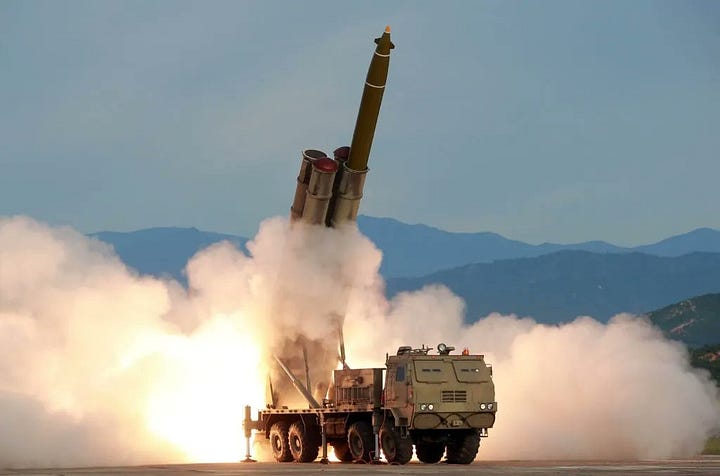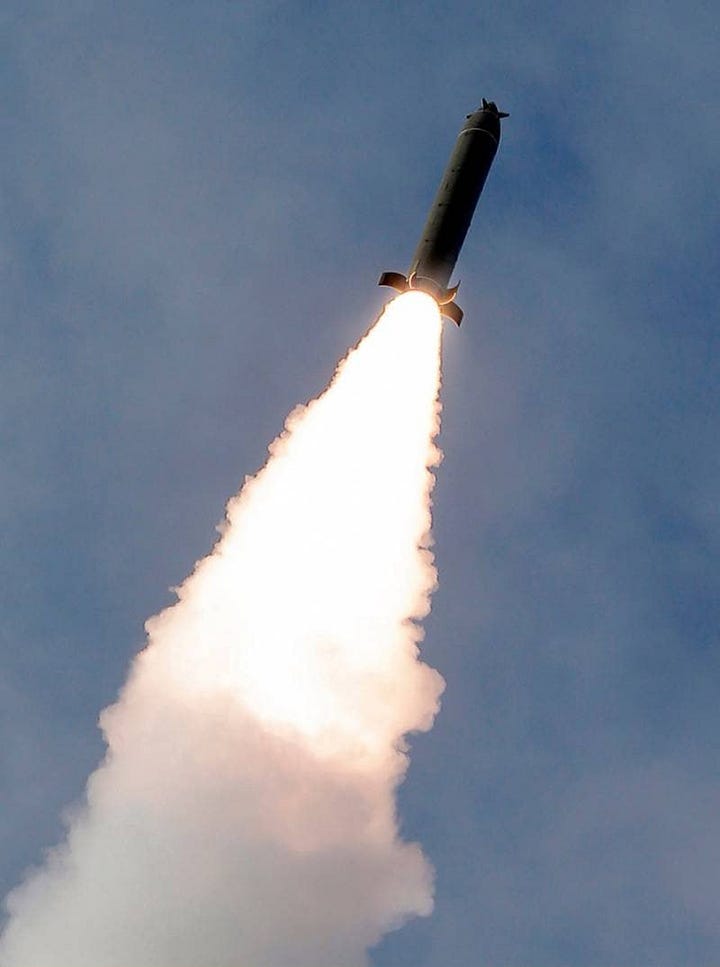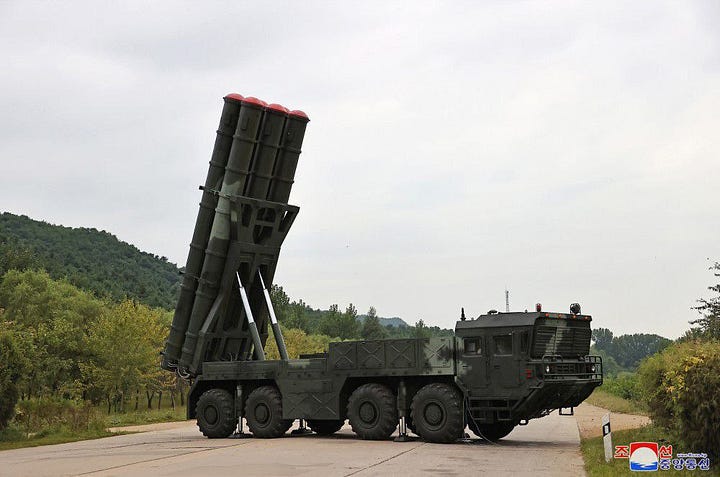Ukrainian Officials, News Reports Suggest Russian Acquisition Of North Korean KN-25 Ballistic Missiles
🇰🇵 🇷🇺 🇺🇦
Note: The following text was originally posted on my X/Twitter account.
A Ukrainian news report attributed to Ukrainian military intelligence (i.e., GUR/HUR) the claim that North Korea has transferred two 600 mm diameter ballistic missile launchers and an unknown number of associated ballistic missiles to Russia.
The only publicly known 600 mm diameter ballistic missile design is the KN-25. Should Russia begin to use the KN-25 against Ukraine, not only will North Korea benefit from the opportunity to see how the KN-25 performs in real-world combat conditions—which will allow North Korea to upgrade the design as appropriate—but it may also herald Russia's ability to do something that it has so far been unable to do: undertake large-scale ballistic missile launches.




North Korea is understood to have previously transferred very different KN-23 ballistic missiles to Russia. It is worth noting that North Korea has also transferred large numbers of much shorter-range 240 mm diameter and 107 mm diameter unguided artillery rockets and associated launchers to the Russian Army alongside large numbers of towed and self-propelled artillery pieces, as well as towed mortars. The North Korean KN-23 ballistic missile is understood to have initially performed very poorly in Russian service in terms of both reliability and accuracy. More recent reports, however, indicate that Russian technical assistance has allowed North Korea to substantially refine the KN-23 and, in so doing, offer both North Korea and Russia a far more effective North Korean-built ballistic missile design. It remains to be seen if the KN-25 will experience a similar trial by fire, and it is possible that North Korea has already refined the KN-25 based on the experience of the KN-23 in Russian service.
The KN-25 is a 600 mm diameter ballistic missile design that complements North Korea's KN-23 and KN-24 "short-range" ballistic missiles—which are fairly long-range designs in the specific military-geographical context of the Korean Peninsula. These amount to three very different ballistic missile designs/design families. The KN-25 has been tested to a maximum range of 380 kilometers and is reportedly equipped with a 300-kilogram warhead.
There is no Russian analogue to the North Korean KN-25. Russia's Iskander ballistic missile—which the North Korean KN-23 strongly emulates—is much larger and in a different capability class, while Russia's guided 300 mm artillery rockets—missiles by another name—associated with the Tornado-S system are much smaller and have a significantly lower maximum range. The Russian Army, which operates the Iskander ballistic missile, has paid a steep price for its failure to undertake a like-for-like replacement of the Soviet Tochka short-range ballistic missile and, more generally, deploy a ballistic missile that can be used to strike battlefield targets located 100-300 kilometers from the frontline. While the unproven KN-25 does not appear to be optimized for such a battlefield strike role, which demands a high degree of accuracy and precision, it can be used to undertake the primary role in which the Iskander has been used in the Russia-Ukraine War: as a fairly long-range strike munition against stationary/fixed targets.
The KN-25 is associated with both a wheeled launchers. One of the wheeled launchers can carry up to four KN-25 ballistic missiles at a time, while another can carry up to six KN-25 ballistic missiles at a time. The tracked launcher can also carry up to six KN-25 ballistic missiles at a time. Russia is likely to have received the wheeled launcher given the logistical challenges associated with the regular movement of a heavy tracked launcher of this type, not least when it employs North Korean components that are not in the Russian Army's inventory. The reported transfer of just two KN-25 launchers suggests a small-scale combat trial, which may be motivated more by North Korean self-interest than a serious Russian desire to expand its ballistic missile arsenal through the acquisition of another North Korean ballistic missile design.
Uncertainties as to the number of KN-25 ballistic missiles transferred to Russia notwithstanding, it will be interesting to see whether the Russian Army views the KN-25 as a ballistic missile that is best used in salvos once it undertakes several initial small-scale test launches in combat conditions. The primary targets for North Korea's conventionally-armed ballistic missiles in the Korean Peninsula—which notably includes densely-packed airbases—are very different than the targets that Russia encounters in Ukraine. Unsurprisingly, the KN-25 is a North Korean weapon system that was developed to meet North Korea's requirements in accordance with North Korea's military doctrine in North Korea's specific military geographical context. Russia will likely encounter much the same dynamic it experienced when importing the Shahed-136 propeller-driven single-use strike drone from Iran, a design that was and remains poorly optimized for Russia's specific needs in the context of the Russia-Ukraine War, despite considerable Russian modifications to the Iranian design over the past three or so years.
We are likely to see Russia attempt to adapt imported North Korean systems, including the KN-25, to meet Russian military requirements in accordance with Russian military doctrine in Russia's peculiar military-geographical context or at least the specific military-geographical context of the Russia-Ukraine War. Time will tell if the North Korean KN-25 will leave its mark on the Russia-Ukraine War.

